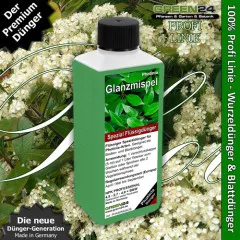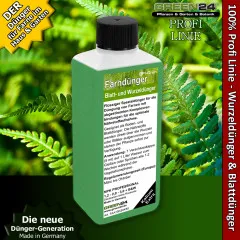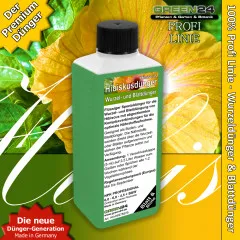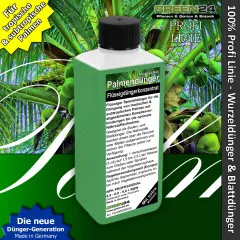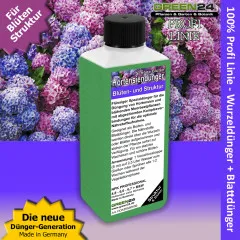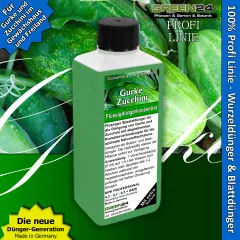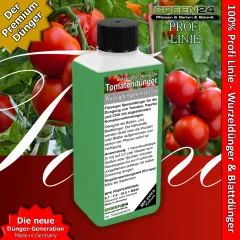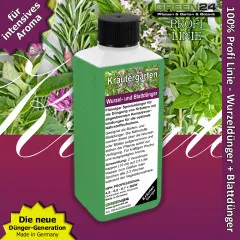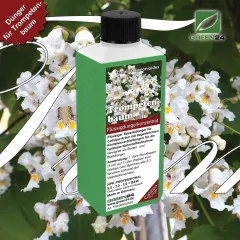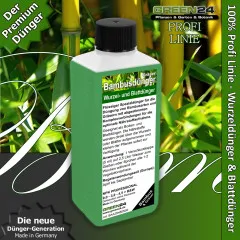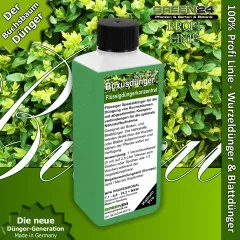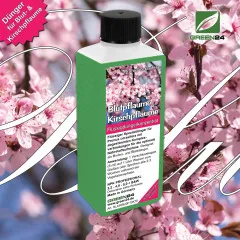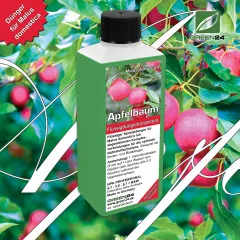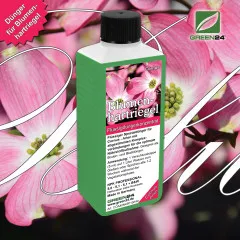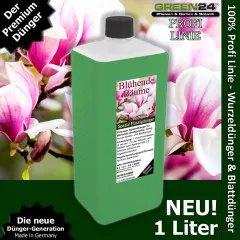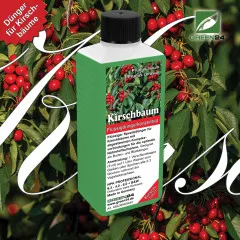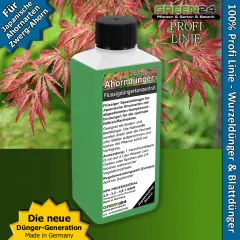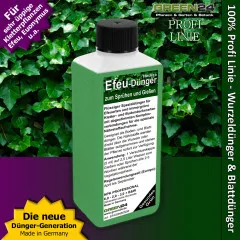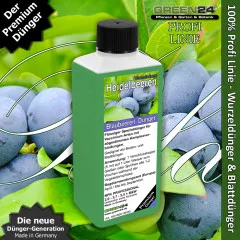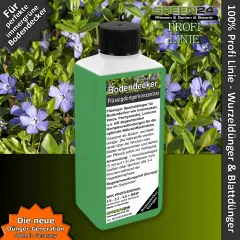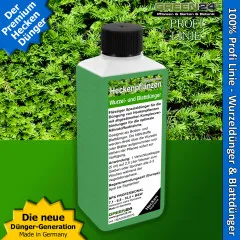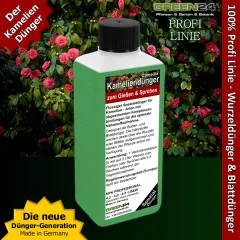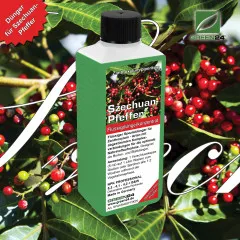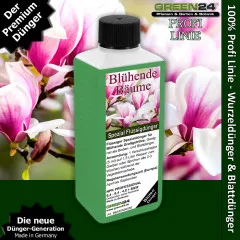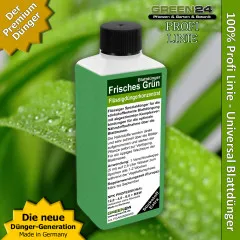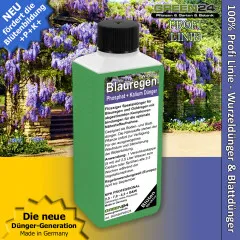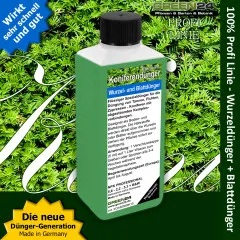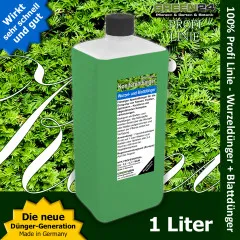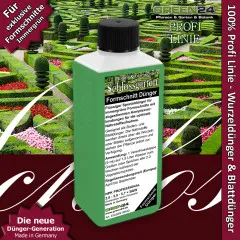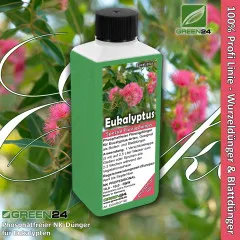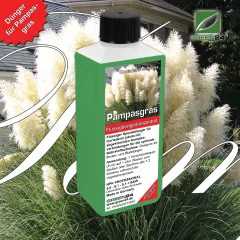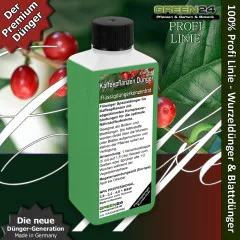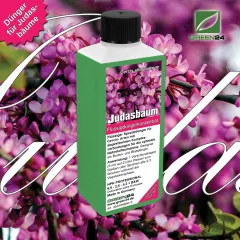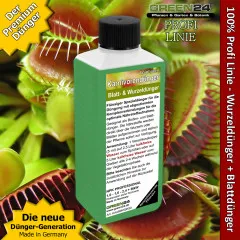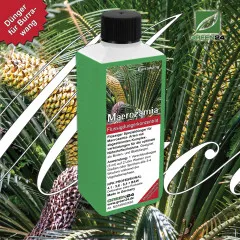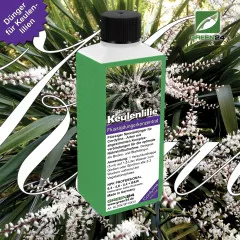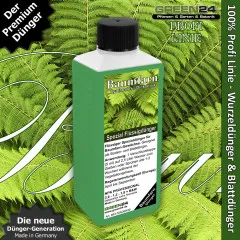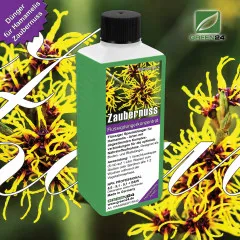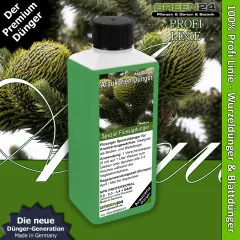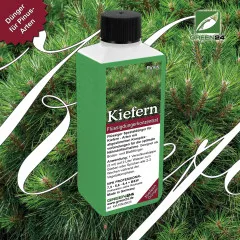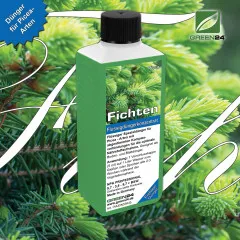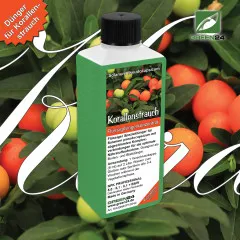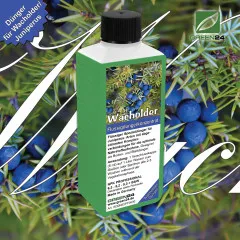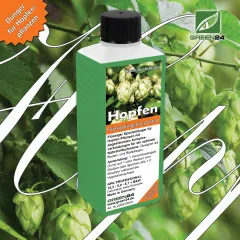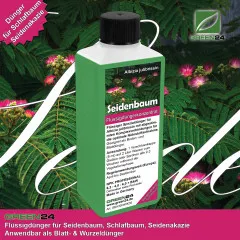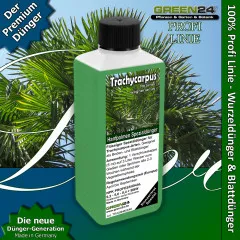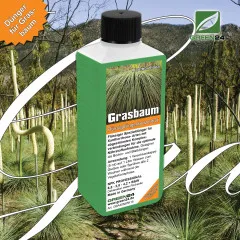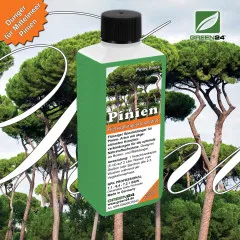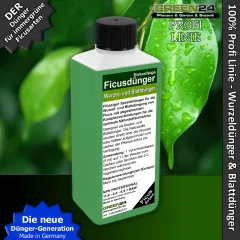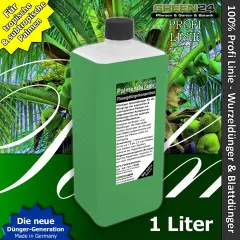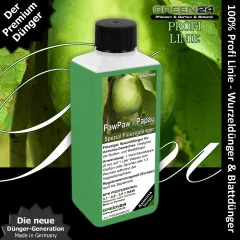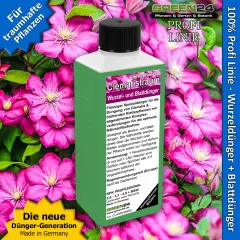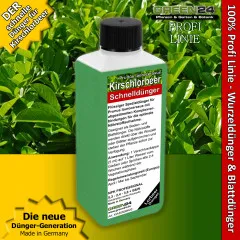Settings
Shipping country
Languages
Often ordered together
Recommendation for this
Alternative or compatible
More from: Trees, Shrubs & Hedges
Products description
The Hedge Champion: GREEN24 Specialized Fertilizer for Cherry Laurel
Cherry Laurel (Prunus laurocerasus) is Germany's most popular hedge plant, and for good reason. With its glossy, evergreen leaves, high pruning tolerance, and dense growth, it provides year-round privacy and elegant garden design. However, to unfold its full splendor, this demanding shrub requires nutrition specifically tailored to its needs. Our Cherry Laurel Specialized Fertilizer is exactly this success formula for perfect hedges.
The Cherry Laurel Family (Prunus laurocerasus)
- Family: Rosaceae (Rose family)
- Genus: Prunus (Stone fruit)
- Species: Prunus laurocerasus (Cherry Laurel/Laurel Cherry)
- Description: Evergreen, fast-growing shrub or small tree with leathery, glossy leaves. Reaches heights of 2-7 meters depending on variety and pruning.
- Origin: Originally from Asia Minor and the Balkans, cultivated in Central Europe since the 16th century.
- Popular Varieties:
- 'Rotundifolia' - Broad-leaved, very robust, up to 4m tall
- 'Caucasica' - Narrow-leaved, particularly winter hardy
- 'Novita' - Compact growth, ideal for low hedges
- 'Herbergii' - Slow-growing, very dense
- 'Etna' - Bronze-colored new growth, decorative
- Prunus lusitanica 'Angustifolia' - Portuguese Cherry Laurel, particularly elegant
- Special Feature: Despite its name, cherry laurel is related neither to laurel nor to cherry, but belongs to the stone fruit family. All plant parts except the fruit flesh are toxic.
The Science of the Perfect Hedge
The Evergreen Formula for Cherry Laurel
As an evergreen shrub, cherry laurel has a high nutrient requirement year-round for maintaining leaf mass:
- Balanced Nitrogen (N): For continuous growth and formation of new shoots. Too much nitrogen makes the plant soft and frost-sensitive, too little leads to yellowing.
- Phosphorus (P) for Strong Roots: Essential for a deep, widely branched root system that safely supplies the large leaf mass and survives dry periods.
- Potassium (K) for Winter Hardiness: The most important nutrient for frost resistance. Potassium hardens tissue and makes the plant resistant to cold damage.
- Magnesium & Iron: Central for the characteristic, rich green of the leaves. Deficiency leads to chlorosis (yellowing) between leaf veins.
- Trace Elements: Manganese, zinc, and boron for healthy leaf development and disease resistance.
Application: Root and Foliar Feeding for Maximum Success
Root Feeding (Standard Method)
- Dosage: 5ml per 1 liter of water
- Frequency: During main growing season (March to September) every 2-3 weeks
- Application: Water soil around plant thoroughly. For hedges: 2-3 liters of solution per running meter
- Important: Slightly moisten soil before fertilizing, never fertilize on dry soil
Foliar Feeding (Turbo Boost for Quick Results)
The large, smooth leaves of cherry laurel are ideal for foliar feeding and absorb nutrients very efficiently.
- Dosage: 2-5ml per 1 liter of water (reduced concentration!)
- Application: Spray leaves thoroughly from both sides, especially leaf undersides. Ideal in early morning hours or evenings
- Frequency: Can be applied every 3-4 weeks in addition to root feeding
- Advantage: Particularly effective for acute nutrient deficiency or quick regeneration after pruning
- Tip: Mixable with many plant protection products for combined application
Care Guide for Cherry Laurel
Location and Soil
- Light: Sun to partial shade, tolerates even deeper shade
- Soil: Well-draining, humus-rich, slightly acidic to neutral (pH 6.0-7.5)
- Moisture: Evenly moist but no waterlogging
Pruning and Shaping
- Hedge pruning: 2x annually (June and August/September)
- Technique: Cut with hand hedge shears, not with electric tools (cuts leaves)
- Topiary: Very pruning tolerant, regrows from old wood
Special Features of Cherry Laurel and Its Uses
Hedges and Privacy Screening
- Planting distance: 80-100cm for dense hedges
- Height: 1.5-4m depending on variety and pruning
- Advantage: Year-round, dense privacy screening
Individual Planting
- Specimen shrub: Impressive individual plants up to 7m height
- Underplanting: Tolerates root pressure, ideal under trees
- Container cultivation: Possible, requires winter protection
Ecological Value
- Flowers: White flower clusters in May, important for bees
- Fruits: Black stone fruits, food for birds
- Winter shelter: Dense foliage provides protection for small animals
Problem Solving Through Targeted Nutrient Supply
Common Problems and Solutions
- Yellow leaves: Usually nitrogen or iron deficiency → Regular fertilizing with trace elements
- Brown leaf edges: Potassium deficiency or drought stress → Potassium-rich fertilizing, better water supply
- Sparse hedge: Nutrient deficiency or too little light → Intensify fertilizing, possibly thin out
- Frost damage: Potassium deficiency → Autumn fertilizing with potassium-emphasized fertilizer
- Fungal diseases: Weakening due to nutrient deficiency → Strengthening through balanced fertilizing
Effects of Optimal Fertilizing
- Leaves: Become larger, thicker, and more intensely green glossy
- Growth: Even, dense growth without gaps
- Branching: Stable, dense branching for perfect hedge form
- Flowers: Richer flowering in May/June
- Winter hardiness: Improved frost resistance through potassium supply
- Resistance: Stronger resistance to pests and diseases
Mandatory Application Instructions
- Mandatory observance of information sheet 130405! This can be found at URL https://www.green24.de/NPK.pdf
- Always observe the label!
- Do not apply undiluted.
- Shake well before use.
- Only apply during the growing season.
Safety Instructions
- Avoid contact with eyes, skin, and clothing.
- Do not inhale spray or spray mist.
- Keep away from food and beverages.
- Wash face and hands thoroughly after use.
- Official advisory recommendations take precedence.
- Fertilizers may leave stains on surfaces that may not be removable.
Storage
- Store dry, dark at +8°C to +40°C.
- Keep out of reach of children and animals.
- Fertilizer must not be introduced into water bodies or reach wastewater.
- With proper storage, stable for several years without quality loss.
- Use diluted fertilizer promptly.
File
Leaflet 130504 for general application of liquid fertilizers (concentrates)307.09 KB
Fragen & Antworten
Last viewed:
Back to top

